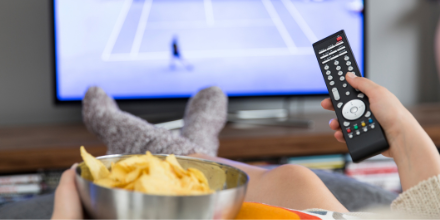Cookies in the office breakroom, cheesecake served after dinner, and the urge to raid your refrigerator while watching TV can all be triggers.
A trigger is a food or a situation that can set you off course with your healthy habits, such as causing you to overeat. Sometimes you can be triggered just by seeing a treat or food item. Other times, you may be triggered by an event like a dinner party or a birthday. Triggers are everywhere. Managing them can help you take control of your weight and health.
What Triggers You?
Triggers can be different for everyone. It’s important to determine where your own struggles lie. The first step is to identify your triggers. Some common ones are listed below.
- A candy jar on your co-worker’s desk
- Leftovers from your child’s plate
- Long conference calls
- Watching TV
- Passing fast food restaurants on the way home from work
- Potato chips in your cabinet
- Social activities
Handling Triggers
Once you have identified your triggers, determine what you can do to manage them. This may take some work and thought.
Avoid: If there is something in your sight, move it or get rid of it altogether. If you know there are usually donuts in the break room, don’t go there. You are less likely to be triggered if you don’t see the treats. Refresh your pantry. Take the processed foods out, or at minimum, move them to the back or to a top shelf where they are harder to see.
Replace: Determine what your specific trigger foods are and find a replacement. If potato chips trigger you, find a crunchy alternative. Consider veggies and hummus or crunchy fruit. If ice cream triggers you, try Greek yogurt or fruit with a low-calorie whipped topping. Finding a healthier, tasty replacement can help you feel satisfied.
Make a New Plan: If certain events and situations trigger you to eat, don’t go there! For example, if you are triggered by watching TV, change it up. Do an activity like knitting, putting together a puzzle, or coloring to stay busy. If driving by fast food restaurants on the way home is tempting, take a different route to avoid seeing the signs.
Don’t Count out Nutrition: Make sure your nutrition plan is in place. Sometimes physical hunger can be triggering. When you let yourself get overly hungry, it can cause you to choose unhealthy food out of convenience. Plan ahead for nutrition-packed meals and snacks to ensure you have the energy you need.
Build New Triggers: Don’t count out positive triggers! If you are struggling to drink more water, buy a new water bottle for your desk at work to remind you to hydrate. Leave shoes by your door to encourage you to go outside and get some physical activity.
By paying closer attention to your triggers, you can improve your nutrition, your health habits, and your overall lifestyle.






